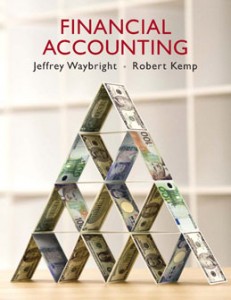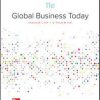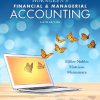Test Bank for Financial Accounting, 1st Edition: Waybright
$35.00 Original price was: $35.00.$26.50Current price is: $26.50.
Test Bank for Financial Accounting, 1st Edition: Waybright
Instant download Test Bank for Financial Accounting, 1st Edition: Waybright pdf docx epub after payment.

Product details:
Table of contents:
Business, Accounting, and You
2(50)
Why Study Accounting?
4(2)
Accounting Teaches the Language of Business
4(1)
Accounting Emphasizes the Importance of Ethical Business Behavior
4(2)
An Understanding of Accounting Helps Individuals Ensure That the Business Is Profitable
6(1)
What Is Accounting?
6(1)
How Are Businesses Organized?
7(2)
Types of Businesses
7(1)
Choice of Business Organizations
7(2)
What Accounting Principles and Concepts Govern the Field of Accounting?
9(1)
Generally Accepted Accounting Principles
9(1)
The Business Entity Concept
9(1)
The Reliability (Objectivity) Principle
10(1)
The Cost Principle
10(1)
International Financial Reporting Standards
10(1)
How Is the Accounting Equation Used to Record Business Transactions?
10(7)
Transaction Analysis
11(1)
Stockholders’ Equity
12(5)
What Do Financial Statements Report, and How Are They Prepared?
17(35)
The Income Statement
17(2)
The Statement of Retained Earnings
19(1)
The Balance Sheet
20(1)
The Statement of Cash Flows
20(1)
Relationships Between the Financial Statements
20(8)
Accounting Vocabulary
28(2)
Accounting Practice
30(18)
Apply Your Knowledge
48(1)
Know Your Business
48(4)
Analyzing and Recording Business Transactions
52(56)
How Are Accounts Used to Keep Business Transactions Organized?
54(2)
Organizing Accounts
54(1)
Assets
54(1)
Liabilities
55(1)
Stockholders’ Equity
55(1)
What Are Debits, Credits, and T-Accounts?
56(2)
Normal Balance
57(1)
How Are the General Journal and General Ledger Used to Keep Track of Business Transactions?
58(10)
Transaction Analysis
60(1)
Applying Transaction Analysis
60(7)
Balancing the T-Accounts
67(1)
How Is a Trial Balance Prepared and What Is It Used For?
68(40)
Correcting Errors
70(1)
Preparation of Financial Statements
70(13)
Accounting Vocabulary
83(1)
Accounting Practice
83(22)
Apply Your Knowledge
105(1)
Know Your Business
105(3)
Adjusting and Closing Entries
108(66)
How Does a Company Accurately Report Its Income?
110(1)
Revenue Recognition and Matching Principles
110(1)
What Is the Role of Adjusting Entries, and When Are They Prepared?
111(9)
Accruing Revenues
113(1)
Accruing Expenses
113(1)
Adjusting Deferred Revenues
114(1)
Adjusting Deferred Expenses
115(5)
How Are Financial Statements Prepared from an Adjusted Trial Balance?
120(3)
The Adjusted Trial Balance
120(1)
Preparing the Financial Statements
121(2)
How Does a Company Prepare for a New Accounting Period?
123(51)
Completing the Accounting Cycle
123(1)
The Three Closing Entries: Revenues, Expenses, and Dividends
124(2)
Post-Closing Trial Balance
126(1)
Summary of the Adjusting and closing Process
127(15)
Accounting Vocabulary
142(1)
Accounting Practice
143(27)
Apply Your Knowledge
170(1)
Know Your Business
171(2)
Comprehensive Problem
173(1)
Accounting for a Merchandising Business
174(54)
What Is the Relationship Between Wholesalers, Retailers, and Customers?
176(1)
How Do Periodic and Perpetual Inventory Systems Differ?
176(2)
How Do You Account for the Purchase of Inventory?
178(3)
Cash and Credit Purchases
178(1)
Purchase Returns and Allowances
178(1)
Purchase Discounts
179(2)
How Do You Account for the Sale of Inventory?
181(4)
Cash Sales
181(1)
Credit Sales
182(1)
Sales Returns and Allowances
183(1)
Sales Returns
183(1)
Sales Allowances
184(1)
Sales Discounts
185(1)
How Do You Account for Freight Charges and Other Selling Expenses?
185(5)
Costs Related to the Receipt of Goods from Suppliers
187(1)
Costs Related to Delivering Goods to Customers
188(2)
Other Selling Costs
190(1)
How Do You Prepare a Merchandiser’s Financial Statements?
190(5)
The Income Statement
190(2)
The Statement of Retained Earnings
192(1)
The Balance Sheet
192(3)
Focus on Decision Making: Ratios
195(33)
The Gross Profit Percentage
195(1)
The Current Ratio
195(7)
Accounting Vocabulary
202(1)
Accounting Practice
203(22)
Apply Your Knowledge
225(1)
Know Your Business
225(3)
Inventory
228(60)
What Inventory Costing Methods Are Allowed?
230(3)
Cost Flow Versus Physical Flow of Inventory
231(2)
How Are the Four Inventory Costing Methods Applied?
233(6)
Inventory Cost Flows
233(2)
Specific-Identification Method
235(1)
First-In, First-Out (FIFO) Method
235(1)
Last-In, First-Out (LIFO) Method
236(2)
Average Cost Method
238(1)
Journalizing Inventory Transactions
239(1)
What Effect Do the Different Costing Methods Have on Net Income?
239(2)
What Else Determines How Inventory Is Valued?
241(2)
How Is Inventory Reported on the Balance Sheet?
243(1)
Inventory Shrinkage
243(1)
How Do Inventory Errors Affect the Financial Statements?
244(2)
Is It Possible to Estimate the Value of Inventory If the Inventory Is Accidentally Destroyed?
246(2)
Focus on Decision Making: Ratios
248(40)
The Rate of Inventory Turnover
248(15)
Accounting Vocabulary
263(1)
People also search:
Financial Accounting
Financial Accounting Waybright
Financial Accounting Waybright 1st
Financial Accounting Waybright 1st Test Bank
Test Bank for Financial Accounting, 1st Edition: Waybright Download











